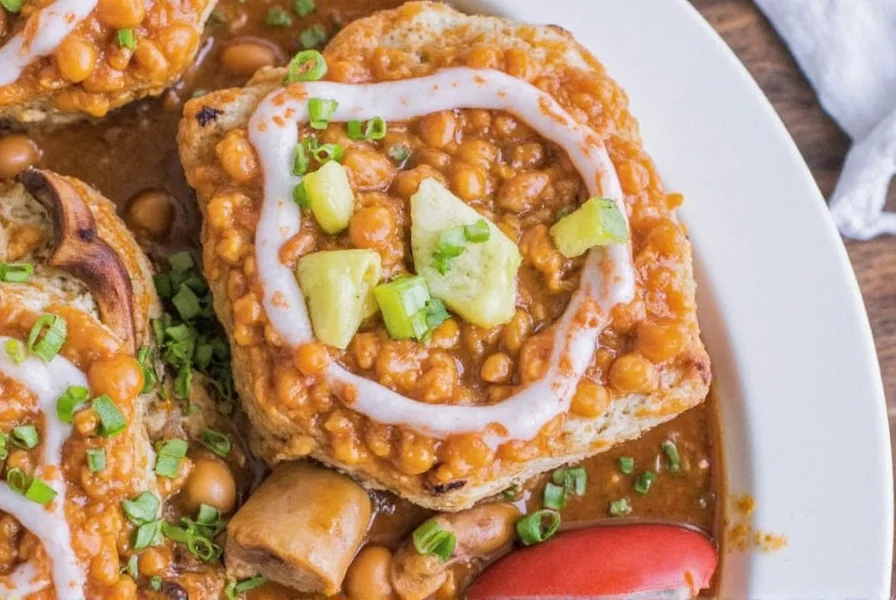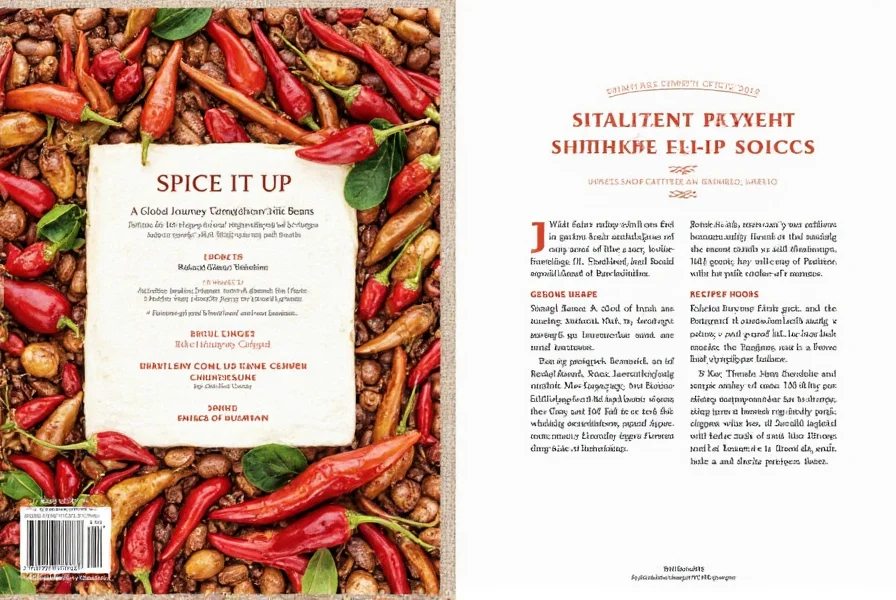Table of Contents
Introduction to Chile and Beans in Global Cuisines
Chiles and beans are two of the most versatile ingredients in global cuisines. Whether you're savoring a spicy chili con carne from Mexico or a rich black bean stew from the Caribbean, these ingredients bring both flavor and nutrition to the table. In this article, we’ll explore how different cultures around the world use chiles and beans together in their traditional recipes. Along the way, we'll share practical tips, insights, and even a few surprises about the power of spice.
Chiles come in all shapes, sizes, and heat levels, from the mild poblano to the fiery habanero. Beans, on the other hand, are a staple in many diets, offering protein, fiber, and a creamy texture that pairs perfectly with spicy flavors. When combined, they create a dish that’s not only delicious but also deeply rooted in tradition.
Global Spice Traditions Featuring Chile and Beans
From the Americas to Asia, chiles and beans have been used in countless ways across cultures. Let's take a quick tour:
- Mexican Chile Relleno con Frijoles: This classic dish features stuffed chiles filled with cheese or meat, served alongside a side of refried beans. The contrast between the spicy chile and the smooth beans is pure magic.
- Caribbean Black Bean Stew with Scotch Bonnet: A hearty stew made with black beans, tomatoes, onions, and the fiery scotch bonnet pepper. The slow-cooked beans absorb the bold chile flavors, creating a rich and satisfying meal.
- Indian Chana Masala with Green Chiles: While not a traditional chile-based dish, green chiles can be added to chana masala (chickpea curry) for an extra kick. The creamy chickpeas balance out the heat beautifully.
- Moroccan Spiced Lentil and Chickpea Stew with Chili: This North African dish uses lentils and chickpeas as a base, then adds a touch of chili for warmth and depth. It's a perfect example of how spices can elevate simple ingredients.
As you can see, chiles and beans are not just a match made in heaven—they’re a global phenomenon. Each region has its own twist, but the core idea remains the same: spice and sustenance go hand in hand.
Practical Tips for Cooking Chile with Beans
If you're new to cooking with chiles and beans, here are some practical tips to help you get started:
- Choose the Right Chile: Different chiles offer different levels of heat and flavor. For beginners, jalapeños or poblanos are great starting points. If you're feeling adventurous, try a serrano or a ghost pepper!
- Toast the Chiles for Extra Flavor: Toasting chiles over an open flame or in a dry pan before soaking them can enhance their smoky, earthy notes. This is especially useful if you're using dried chiles.
- Use Fresh Beans for Better Texture: While canned beans are convenient, fresh or dried beans will give your dish more depth of flavor. Just remember to soak and cook them properly.
- Balance the Heat: If your dish becomes too spicy, add a bit of dairy (like sour cream or yogurt) or a splash of vinegar to tone it down.
- Experiment with Herbs and Spices: Cumin, oregano, garlic, and cilantro are common companions to chiles and beans. Don't be afraid to play with different combinations.

One of the most popular chile and bean dishes is chile con carne, which is often made with pinto beans. Here's a quick tip: if you want a smoother consistency, blend a portion of the beans into the sauce. This creates a velvety texture that complements the chile's heat.
Buying Guide: Choosing the Right Chile and Beans
Whether you're shopping at a local market or browsing online, choosing the right chiles and beans is key to a successful dish. Below is a comparison of popular options:
| Product | Features | Advantages | Use Cases | Target Audience | Suitable Occasions |
|---|---|---|---|---|---|
| Jalapeño Peppers | Mild to medium heat, crisp texture | Great for beginners, easy to find | Stuffed chiles, salsas, tacos | Amateur cooks, family meals | Weekend dinners, casual gatherings |
| Poblano Peppers | Mild heat, thick flesh | Perfect for roasting, stuffing | Chile relleno, enchiladas | Cooking enthusiasts, cultural cuisine lovers | Special occasions, themed dinners |
| Dried Ancho Chiles | Mild to medium heat, rich flavor | Great for sauces, stews, and soups | Chili, mole, salsas | Advanced cooks, spice lovers | Holiday feasts, gourmet meals |
| Pinto Beans | Small, oval shape, mild flavor | Classic base for many chile recipes | Chile con carne, refried beans | All skill levels, home cooks | Daily meals, family dinners |
| Black Beans | Dark color, firm texture | Great for soups, stews, and salads | Caribbean bean dishes, vegetarian meals | Health-conscious individuals, vegetarians | Lunches, potlucks, light meals |

When buying chiles, look for firm, unblemished peppers with bright colors. For beans, choose those that are uniform in size and free from cracks or mold. If you're using dried beans, make sure they're not old or shriveled—this affects their cooking time and texture.
A sentence that expands on the chile recipe with beans: One of the most beloved chile recipes with beans is the classic Mexican chile con carne, where tender pinto beans are simmered in a rich, spiced tomato sauce, creating a comforting and flavorful meal that brings people together.
Conclusion: Embrace the Heat and Flavor
Chiles and beans are more than just ingredients—they're a celebration of culture, flavor, and tradition. Whether you're making a simple bean soup or a complex chile stew, the combination offers endless possibilities. With the right tools, techniques, and a little bit of courage, you can create dishes that impress even the most seasoned spice lovers.

So, grab a chile, pour yourself a cup of beans, and let the flavor adventure begin. After all, life is too short for bland food—and who knows, maybe you’ll discover your next favorite recipe along the way.










 浙公网安备
33010002000092号
浙公网安备
33010002000092号 浙B2-20120091-4
浙B2-20120091-4